Director's Report
Dear fellow conservationists,
As the days go by I am constantly learning new things about the Brandywine Valley and this region. While I was not raised here, I step out in wonder on a daily basis enjoying the wonderful conservation legacy of this place—both its lands and waters.
To that end, I’ve also started looking back at the origins of the Brandywine Conservancy, formerly known as the Tri-County Conservancy of the Brandywine (and later as the Environmental Management Center). I truly believe that the foundation of the conservation movement and what moves us to this day is inspiration—of the natural world, of beauty, of history, of “home.” Whatever it may be for each person, I believe that inspiration is at the root of conservation.
In my search, I’ve found many publications and articles about our history and the impetus that started it all. Of those publications, I’d like to share an excerpt that I feel beautifully expresses the foundational inspiration of this region:
Reflections of a Culture
“This is a gentle place. Our Forebears sought a simple life, close to the verities of soil and sun, of birth and death – and laughter in between. Our heritage is a quiet one, and we move with the soft-spoken voices of yesterday ever at our elbow.
Here, where sweet river-music fills the air, the pale herons lift from misty sedges, men came to seek a livelihood. Their houses were sturdily proportioned, patiently fashioned – a marvelous-coming together of craftman’s hand and seasoned wood. Gardens were planted – fragrant, carefree assemblages of herb and sweetshrub, columbine and daisy. And a man’s tools were his proud badge of office.
The river has a particular timelessness. It has nourished the [Native American], furnished the miller, and witnessed our young men dying for freedom. Small boys have dreamed on its diminutive islands, and there is Hessian blood among its violets at its edge. Artist and philosopher, poet and music-maker, each has here discovered the unhurried wonder of the commonplace.
Ours is a gentle valley. Listen, and you will hear the river sounds. Look, and you may glimpse a Redcoat’s scarlet beneath the stippled sycamores. Come share with us these yesterdays. Pause to discern the fleeting present. And consider, we ask you, all of the infinite tomorrows…” — Sonia Scott Ralston, Chadds Ford, PA
— Excerpt from Canoeing the Brandywine, a Naturalist’s Guide, an educational publication of the Brandywine’s Environmental Management Center, by Charles Aquadro, 1973. Revisions by Staff of the Environmental Management Center of the Brandywine Conservancy, 1980. Illustrations by Stephen Kuter.
Here’s to the dream of spring,
Ellen
Ellen M. Ferretti
Director, Brandywine Conservancy
Brandywine Water Trail Kicks Off with Public Meetings
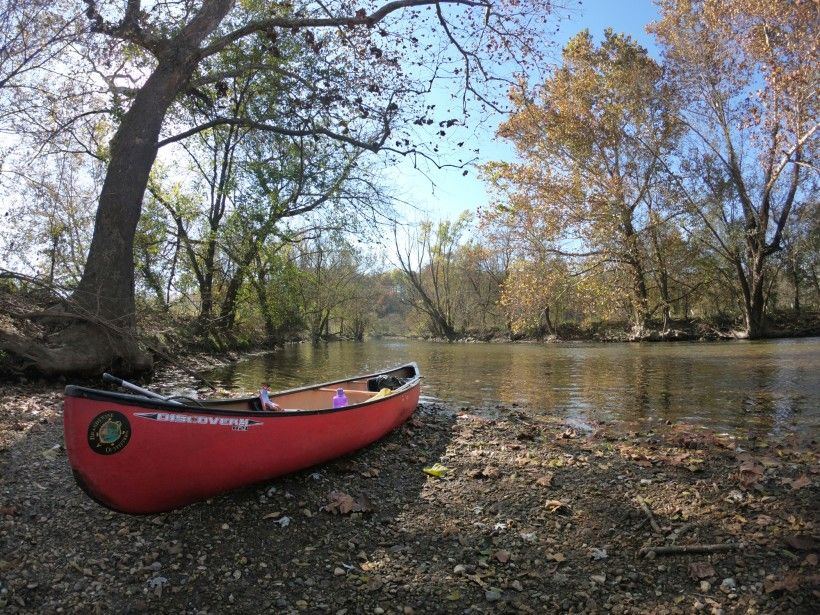
Almost 150 local residents, paddling enthusiasts and local stakeholders attended one of the Brandywine’s Public Open House meetings seeking feedback on a proposed Brandywine Water Trail. Held in Downingtown and Chadds Ford during the month of February, these informal gatherings sought input and suggestions on additional water trail amenities, put-ins, safety and privacy concerns, educational/stewardship opportunities and potential partnerships that the project may foster.

Throughout 2019, the Brandywine Conservancy, along with its partner the Chester County Planning Commission, will be carrying out a feasibility study for a 22-mile Water Trail. The proposed Water Trail will run along the Brandywine from the Coatesville (West Branch) and Downingtown (East Branch) areas to Brandywine Creek State Park, just north of Wilmington, Delaware. "[Water trails are] boat routes along waterways that are suitable for canoes and kayaks. Like conventional land-based trails, water trails are recreational corridors between specific locations that can highlight the natural and cultural history of an area,” notes Stephen Kralik, Pennsylvania Fish and Boat Commission’s Director, Bureau of Outreach, Education and Marketing. Formal water trails also provide information to users about boat safety, stewardship and private versus public property, in addition to local information specific to that particular water trail through a number of promotional outlets, such as a trail maps and guides, trail signage and a website. Water trails can also be positive contributors to local communities by providing economic stimulus and protecting valuable natural resources that are important to the quality of life of local residents.

Throughout the spring and summer, the Brandywine’s project team will be assessing and evaluating current put-in locations (and exploring opportunities for additional locations), documenting current trail amenities (bathrooms, parking areas, etc.), soliciting input from creek users via an online survey, and talking with key stakeholders along the trail route. Such input will help guide the project team and its Study Advisory Committee as they evaluate the proposed trail route and develop water trail recommendations for implementation over the coming years. The recommendations, along with a draft plan, will be made available and presented at a public meeting later this fall.
“As planning gets underway for a Brandywine Water Trail, we remember and celebrate that each water trail is unique and a reflection of Pennsylvania's diverse geology, ecology and communities,” notes Stephen Kralik—a good reminder as we work to improve and enhance access to the Brandywine for its communities.
For future updates on this project, click here to visit the project webpage.
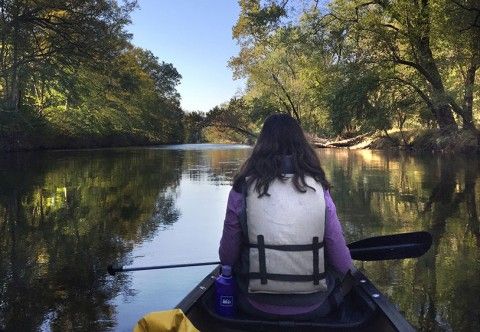
We Want to Hear from You!
Do you love to paddle or float on the Brandywine? If so, we’re looking for your input! The Brandywine Conservancy and the Chester County Planning Commission are conducting an online survey about the proposed Brandywine Water Trail and would appreciate your input. Please click here to open the survey. Be sure to share the link with your friends and family who also love to enjoy the Brandywine!
There’s a New State Forester in Town
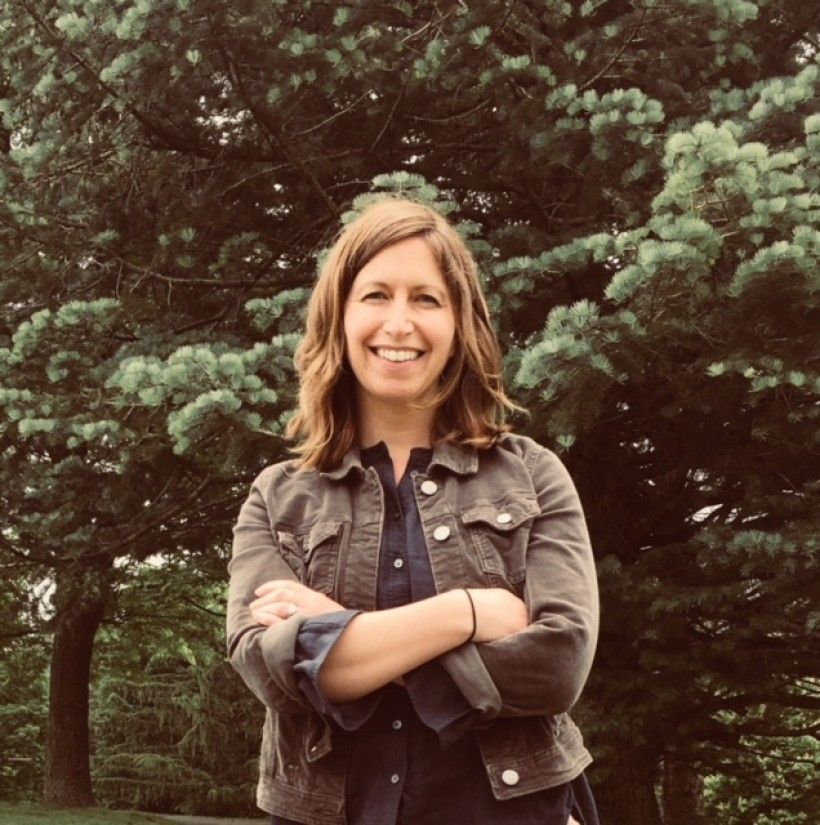
Recently the Pennsylvania Department of Conservation and Natural Resources (DCNR) appointed Ellen Shultzabarger to the role of State Forester / Director of the Bureau of Forestry. She is the first woman to hold this prestigious position in the Bureau’s 125-year history. Prior to her new role, Shultzabarger worked for the Bureau in a variety of positions, with the most recent being the Chief of Conservation Science and Ecological Resources. As State Forester, Shultzabarger is tasked with overseeing 2.2 million acres of state forestland, as well as conserving native wild plants and other natural resources. In the interview below, Ellen discusses her new role, important tasks ahead and what she is most looking forward to as Pennsylvania’s new State Forester.
Starting with the Bureau of Forestry, what role does it serve for the Commonwealth?
The Bureau of Forestry ensures the long-term health, viability and productivity of the Commonwealth’s forests (state and private) and conserves native wild plants. Among its responsibilities, the Bureau manages 2.2 million acres of state forest system, which involves sustainable harvest timber, managing natural gas activity and promoting forest recreation activities such as hiking, biking and hunting.
Within southeast Pennsylvania, Forestry staff wear many hats, but focus primarily on education and outreach, community forestry, watershed restoration, wildfire and prescribed fire, and conserving the last remaining large tracks of forest. The Bureau manages unique habitats such as the Goat Hill Barrens and Little Tinicum Island. It also recently acquired relatively large tracts of forest near Wernersville and Gibraltar Hill near Reading, PA, providing recreation opportunities for residents. The “service foresters” provide advice and guidance to woodland owners, help farmers plant riparian forests and assist communities with their street tree programs.
The Bureau also works with the forest industry to promote sustainable harvesting, partners with local conservancies to conserve land and helps to monitor impacts of invasive species. And finally, the Bureau’s fire staff helps to prevent wildfires; work with local fire departments to extinguish wildfires; and assist partners with prescribed fires to improve wildlife habitat.
While you’ve been with the Bureau for many years in other roles, tell us more about your new role as the State Forester and Director of the Bureau.
As the State Forester / Director of the Bureau of Forestry, I have a varied role within the Commonwealth’s forest resources. First, in the role as State Forester, I serve as the advocate for the responsible stewardship of forest resources at the local, state and national level, and I also represent Pennsylvania on regional and national committees. As Director of the Bureau of Forestry, I manage the Bureau’s roles and responsibilities above, while overseeing a team of approximately 500 full-time and 200 part-time staff.
What are you most looking forward to in your new role?
I’m most excited about the diversity of the position and our work within the Bureau of Forestry. Forest management is so diverse—there’s something new every day. I would say maintaining the state’s bountiful forest resources and promoting the wise use and stewardship of them is what I look forward to most. We are very fortunate in Pennsylvania (Penn’s Woods) to have so much in the way of forested lands and such a large public land base for all to enjoy. We are also fortunate to have so many partners, such as the Brandywine Conservancy, that are sharing our work and passion for managing and protecting the valuable resources we have here.
What are some of the most important items on your ‘To Do’ list that you would like to accomplish this year?
The Bureau is embarking on updating Penn’s Woods, the Bureau’s Strategic Plan which was last updated more than 20 years ago. Another major planning effort is updating the Forest Action Plan, which is due in June 2020 as part of U.S. Forest Service management and funding requirements. Besides lots of planning, we will also be working with our many partners to promote forest stewardship on private forestlands; maintaining our Well-Managed, third-party forest certification; and continuing forest riparian buffer plantings for the health of Pennsylvania watersheds and the Chesapeake Bay. On a lighter note, this year will mark Smokey Bear’s 75th anniversary, so we are looking forward to celebrating that milestone.
What are some of the challenges and opportunities facing Pennsylvania’s forests and native plants?
Usually what comes to mind right away are invasive species—both plant and insects. With the effects of climate change, many invasive species end up faring well. As natural resource managers, we need to identify those upcoming threats from invasives, changing weather events or species effects, and manage for current and future conditions. At the same time, there are tremendous opportunities in forest conservation. Every year recreational uses of our forests increases which connects more people to the resource. The more we can educate people about the value of forests the more strongly they will support our work.
Focusing on this area of the Commonwealth, can you explain the importance of native plants and tree cover?
I don’t think you can overstate the importance of native plants and tree cover. Forests do so much to protect and enhance water quality—and so much research shows the value that natives provide in those ecosystems over non-native species. And of course, in a high-populated area like southeast Pennsylvania, forested and natural areas that provide healthful outdoor recreation are always in high demand. The forest and its trees provide critical habitat for species, as well as lots of health benefits for us humans, too!

In your new role, what will you be doing to increase awareness of the value of trees and native plants?
Education and outreach are major parts of our work—in getting the word out about the value of trees, native plants and forests. At the Bureau, we will be working on ways to better connect the values these resources bring, including clean water, clean air, stormwater impact reduction and providing wildlife habitat—not to mention the direct benefits humans feel when surrounded by trees and forests, such as a reduction in stress and anxiety.
The Bureau has a very vibrant group of service foresters who do an excellent job with outreach and helping private land owners come up with management plans to get the most out of their forested lands. They also provide technical assistance and funding for community tree plantings. The Bureau has also developed school curriculum and trains educators through a great program called Project Learning Tree.
On a personal level, what sparked your interest in conservation?
I am thankful that my parents exposed me to the outdoors and resources at an early age—exploring Pennsylvania’s State Parks and Forests in the South Mountain area, as well as forests and parks all along the east coast. Up to age 12, I grew up on an orchard, caring for our apple, peach and pear trees; which included lots of eating the fruit, too! I really loved learning how to take care of what I felt was my mini forest, and selling the fruit locally to neighbors and within the community. We then moved to a spot along the Conodoguinet Creek—a 104-mile-long tributary of the Susquehanna River in South central Pennsylvania—where I spent the rest of my childhood exploring the creek, paddling, fishing and digging for crayfish. By the time I was off to college, I knew I wanted to do something in natural resources—I didn’t know exactly what yet though. After some forestry, wildlife and wilderness classes, I knew somewhere like DCNR, managing and conserving these special resources, was the place for me. I’m glad I landed in the perfect spot for me here in Pennsylvania!

Do you have a favorite tree and/or native plant?
Gosh, this is a hard one. Every day, I look into my backyard at a big beautiful Copper Beech—I love its purple/gold leaves and its smooth bark. I love seeing my kids playing under it, and I love the leaf color when the sun shines on it—I just love that tree. In the forest, my favorite is the white pine. Its soft needles look so peaceful and inviting, especially when they are speckled in the understory. My favorite non-tree plant would be the Pink Lady’s slipper. It is an interesting, tall and bulbish orchid found in forests—it’s awesome when you stumble upon some.
When not at work, what is your favorite type of outdoor recreation in Pennsylvania?
I love to hike. Be it a long hike to a waterfall or vista, or taking my kids and dogs for quick walks in the woods to get out of the house and get our daily dose of nature. My kids love to explore the boulder field at Hickory Run State Park. Next would be biking on a rail trail or cycling the country roads in Lancaster county where I live. Paddling on the creek is still a favorite since my childhood—especially when I get to see a great blue heron wading along the edge of the water. Also, one of the great perks about this job is that sometimes my “work” means I get to go take a walk in the woods!
Do You Need Land Stewardship Help?
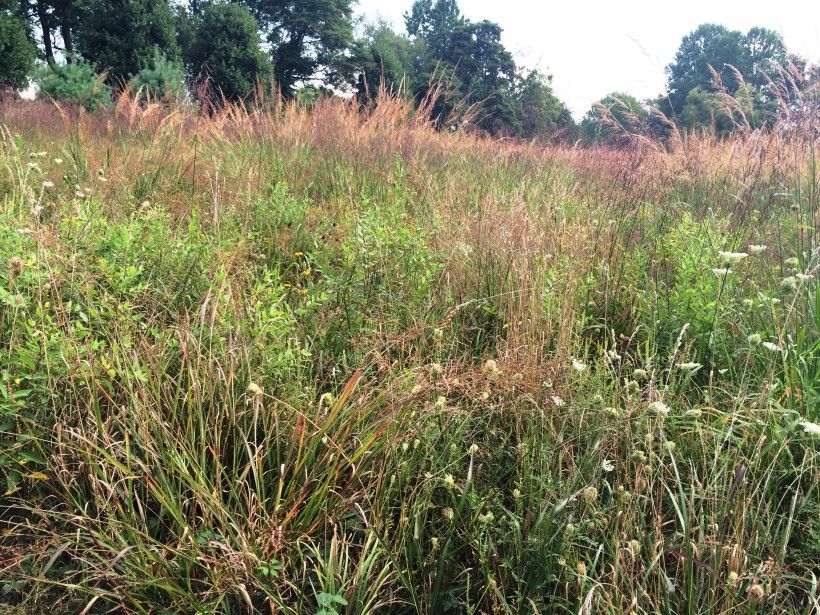
The Brandywine Conservancy's Land Stewardship team is compiling a list of easement landowners who may be interested in receiving planning, technical and/or financial assistance for conservation projects on their land. Whether for a small backyard or a large-scale landscape, let us know what you’re thinking about! Projects might include:
- meadow planting
- bird or pollinator habitat creation
- woodland management or reforestation
- invasive plant removal
- gardening/landscaping with native plants
- wetland creation or improvement
- riparian (stream side) plantings
- deer management
We will use the list as a resource as we identify potential funding or technical assistance sources to support these kinds of projects. If you are interested in being on such a list please email Kristen Frentzel, Easement Manager, [email protected]. We’ll be in touch to find out more about your conservation goals.
Upcoming Calendar of Events
Laurels Preserve Trails Loop Hike
Sunday, March 3
Brandywine Creek Greenway: Community Open House in Delaware
Talleyville Fire Company – Memorial Hall
Monday, March 18
Brandywine Creek Greenway: Community Open House in Delaware
Ezion-Mount Carmel United Methodist Church
Thursday, March 21
Brandywine Creek Greenway: Community Open House in Delaware
Emalea P. Warner Elementary School
Tuesday, March 26
Brandywine Creek Greenway: Community Open House in Delaware
Alexis I. du Pont High School
Thursday, March 28
Cocktails, Chapeaux & Cigars
A Radnor Hunt Races pre-race event
Thursday, March 28
Brandywine Creek Greenway: Community Open House in Delaware
Woodlawn Library
Tuesday, April 2
Stewardship Seminar: Bird Migration
Tuesday, April 2
26th Annual Brandywine River Cleanup
Saturday, April 20
Radnor Hunt Races Pop-Up Shop
A Radnor Hunt Races pre-race event
Thursday, April 25
Spring Garden Walk
Wednesday, May 1
Tree Planting
Saturday, May 4
Stewardship Walk at the Laurels Preserve
Sunday, May 5
Native Plant & Seed Sale
Saturday & Sunday, May 11–12
Wildflower Walk at the Laurels Preserve
Saturday, May 11
Wildflower Bash
A Radnor Hunt Races pre-race event
Friday, May 17
89th Radnor Hunt Races
Benefiting the Brandywine Conservancy
Saturday, May 18
Community Read: The Beauty and Diversity of Native Plant Seeds
Wednesday, May 29
Tree Planting
Saturday, June 1
Tree Identification Walk
Saturday, June 1
Join us at the 89th Radnor Hunt Races

Save the date! The Radnor Hunt Races returns on Saturday, May 18, for an exciting day of steeplechasing. Celebrating 89 wonderful years in 2019, the Radnor Hunt Races is built on many traditions—thoroughbred horses at the peak of athleticism, beautiful horse-drawn carriages, dramatic flowered hats and families cheering along the rail. Above all else, the Races are supported by the legacy of protecting the stunning open spaces that make this region such a beautiful place to call home.
Since 1980, the Radnor Hunt Races have raised more than $5 million to support the Brandywine Conservancy's clean water and open space programs, welcoming around 20,000 attendees from across the region each year. With the help of the Races and many likeminded partners over the past 50 years, the Conservancy has protected over 64,500 acres of open space—including the Radnor Hunt racecourse itself and surrounding lands—and continues to improve and safeguard water quality, land protection, outdoor recreation and historic preservation in southeastern Pennsylvania and northern Delaware.
We hope you can join us for this exciting tradition in May! Click here to learn more about ticket options.
Pennsylvania Master Naturalist Training in Westmoreland County
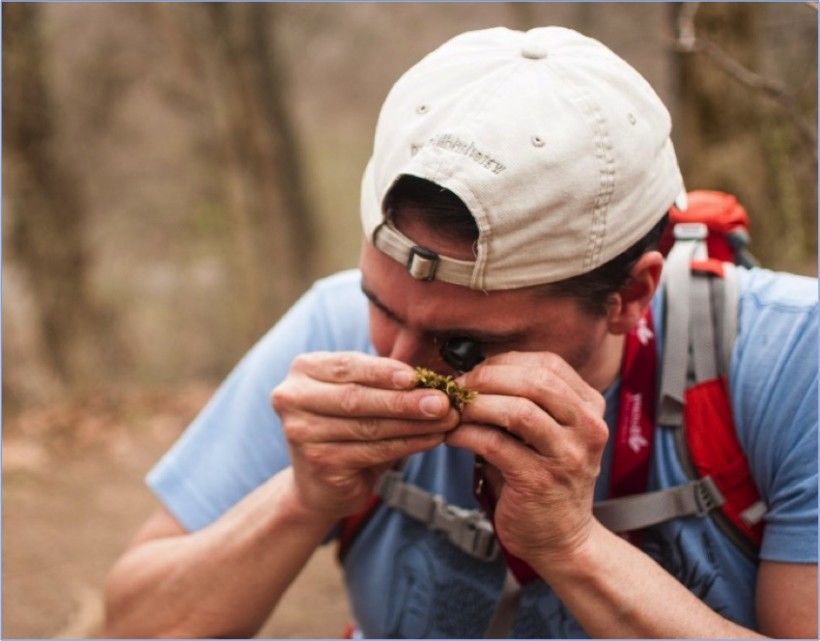
In the fall of 2019, Pennsylvania Master Naturalist, a nonprofit organization, is partnering with the Brandywine Conservancy’s Penguin Court—located in Westmoreland County, PA—to train citizen volunteers in natural history.
Pennsylvania Master Naturalist is dedicated to building a corps of trained volunteers who provide outreach and service dedicated to protecting the Commonwealth’s natural heritage. Interested Pennsylvanians become certified Master Naturalists through training and volunteer service.
To become a certified Master Naturalist volunteer, a 50-hour volunteer training course must be completed followed by annual volunteer service hours and continuing education in the natural sciences. Adults who are curious about nature, enjoy the outdoors and volunteering, and want to be a part of natural resource conservation in Pennsylvania are perfect candidates to become Pennsylvania Master Naturalists.
Interested Applicants:
Once accepted into the Pennsylvania Master Naturalist program, participants (referred to as Trainees during the first year) begin by attending an initial intensive training. This natural history course includes at least 50 hours of classroom (weekday evenings) and field sessions (Saturdays). Following initial training, participants will engage in 30 hours of service in the first year and eight hours of continuing education to become certified as a Master Naturalist volunteer. To maintain their status as Master Naturalist volunteers, participants must complete 20 hours of volunteer service and 12 hours of continuing education each year.
In 2019, training will be held at Penguin Court in Westmoreland County, beginning in August and ending in October. A training schedule and application information can be found on Pennsylvania Master Naturalist’s website at www.pamasternaturalist.org under “Become a Master Naturalist” and “Training Courses.” To receive the discounted application fee, interested persons should apply online by May 1, 2019. Space is limited and only 15 applicants will be considered.
Building Volunteer Leadership for Community-based Conservation
Trained Master Naturalists design and pursue a wide variety of service projects from habitat restoration and native plantings, to nature walks and interpretative displays or publications on natural history, to water quality monitoring and supporting the natural resource conservation efforts of partnering organizations.
For additional information or questions, please contact Maeve Rafferty at [email protected] or call (570)441-3364. You can also click here to visit Pennsylvania Master Naturalist’s website.
Conserving Land for the Future: A 25-Year Look Back

George and Betsy Turner grew roses—acres and acres of roses—in long greenhouses on their farm in New Garden Township, Chester County, PA. The setting was initially rural farmland; the roads were narrow, dipping and twisting as they followed the contours of the land. Locals knew to slow down and share the road when approaching the narrow bridges. But over the years, developments grew up and grew closer and the roads grew wider and straighter.
The farm included a 20-acre woodland that surrounded a strong spring—which fed an old concreted-lined swimming pool—that overflowed to form a stream into the Red Clay Creek. The pool was icy cold, but welcome relief during the hot Fourth of July picnic parties that George and Betsy hosted every year for the families of their many friends.
Whenever a tree fell in the woods, George would cut it up for firewood. Each Christmas he would deliver the bounty of his farm to friends—a run of firewood for the men and a dozen long-stem roses for the women. The boxes of roses usually contained a personal missive for the women. No notes for the men; they knew who brought the wood for it would be neatly stacked in its usual place.
George was known for sending personal letters and long thank you notes to his friends. He would often write last-minute thoughts on the back of the envelope—and sometimes even the front, if it was a long thought. He was also known to sign his full name, George C. Turner, at the end of those letters and notes, and write under the signature, “Save this letter, I may be famous someday.”
In the early 1990s, George became ill. It was serious. George and Betsy began thinking about the farm and that 20-acre woods guarding the spring. It was originally Betsy’s family’s property, but George cared for it as if it were passed down from his father. Betsy loved those woods, so George did, too. George contacted the Brandywine Conservancy about conserving the woods. At first, he was reluctant—hesitant to do anything that would impede his children’s future—but Betsy was adamant. She did not want those woods cut down. She liked the idea of a permanent covenant that would forever protect the woods. She was not too concerned about telling her kids what to do. After all, she had been doing that all her life, and she liked the idea that her wishes would be kept long after she was gone. George grew to like that idea, too; he enjoyed the irony of it.
In the fall of 1994, George and Betsy Turner granted a conservation easement to the Brandywine Conservancy. Their 20-acre woods are now forever protected from being cut down and/or developed, leaving a permanent legacy for their children, community and future generations.
Connecting the Water Dots in the Oxford Region
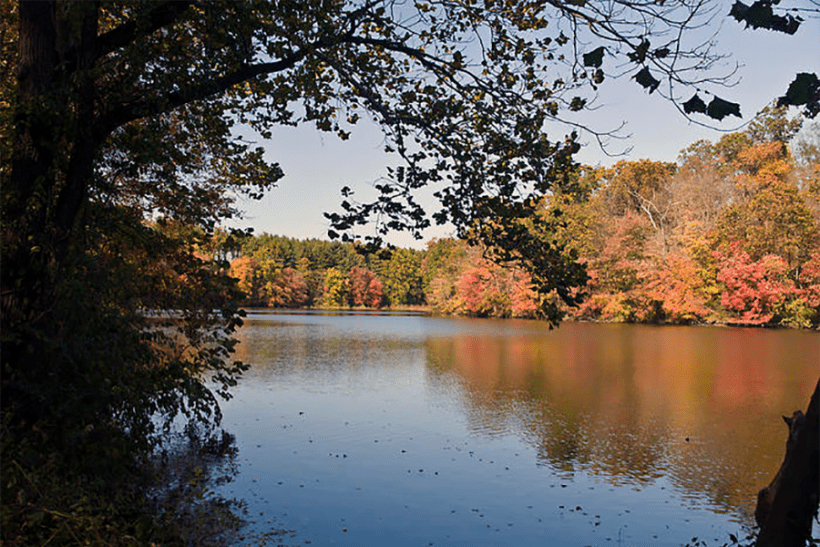
At the end of February 2019, the Oxford Region Planning Committee held a special event, entitled Connecting the Water Dots: An Exploration of the Oxford Region's Water Quality Initiatives. Public and private water quality partners—including the Brandywine Conservancy—came together to present efforts underway to protect the area’s water resources and water supplies. Presentations by water suppliers, including Chester Water Authority and Oxford Borough, provided an overview of their source water protection plans and the importance of forging partnerships across different land uses to provide safe drinking water to residents. Other environmental partners such as the Brandywine Conservancy, Octoraro Watershed Association, Alliance for the Chesapeake Bay and Chester County Conservation District presented on local and agricultural initiatives to improve water quality—including new grants from the National Fish & Wildlife Foundation (NFWF) and the recent $3.6 million Regional Conservation Partnership Program (RCPP) award for agricultural best management practice (BMP) implementation on farms within the Chesapeake Bay watershed. The Chester County Water Resources Authority underscored the interconnected and mutually beneficial relationship between source water protection, stormwater management and agricultural water quality improvement efforts. Partners mapped the general areas in which they were working and discussed how to leverage each other’s partnerships to maximize impact moving forward.
The Conservancy is currently partnering with the University of Maryland Environmental Finance Center through a National Fish & Wildlife Foundation grant through the end of the year. Both organizations are working together to develop a regional stormwater management strategy that identifies programming in regulated and unregulated areas of the Oxford Region to meet Phase III WIP 2025 goals. This event helped to identify, assess and connect existing plans, programs and partners to meet shared water quality goals.
Art Meets Nature in this Creative Collaboration
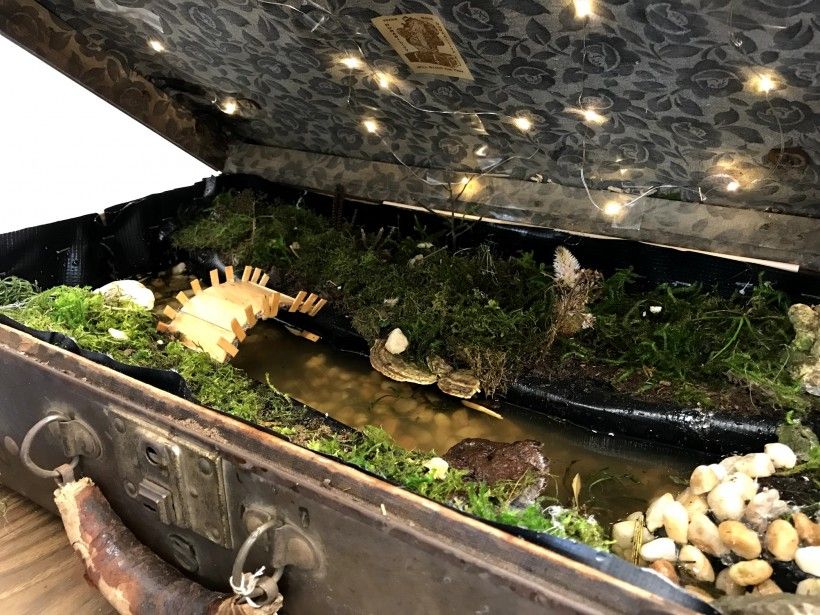
This past summer, the Brandywine River Museum of Art presented Natural Wonders: The Sublime in Contemporary Art—a landmark exhibition featuring works by 13 renowned artists, each reflecting on the power of nature and threats to the environment with stunning sculptures, video installations and photographs. The exhibition heightened our sense of wonder and raised questions about our relationship with the natural world.

Using the exhibition as inspiration, the Conservancy and Museum led an engaging collaborative project between Upland Country Day School in Kennett Square, PA, and Natural Wonders artist Kathleen Vance. As a foundation for the project, Liam Gallagher, Director of Making and Doing for Upland’s IDEA Center, and Terry Anderson, Upland’s art teacher, built curricular connections to art, science and the environmental studies for their seventh-grade students. Then, on a series of field trips, their students explored environmental topics while touring the Museum’s Natural Wonders exhibition with Mary Cronin, Brandywine’s Dean of Education, and learned about the importance of local efforts to conserve land during a hike in the Laurels Preserve with Brandywine’s Grant Folin, Preserve Manager.
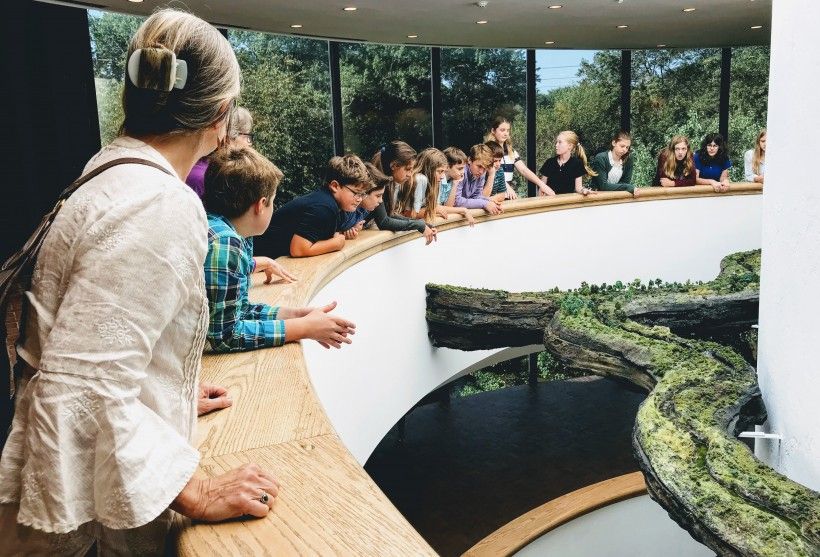
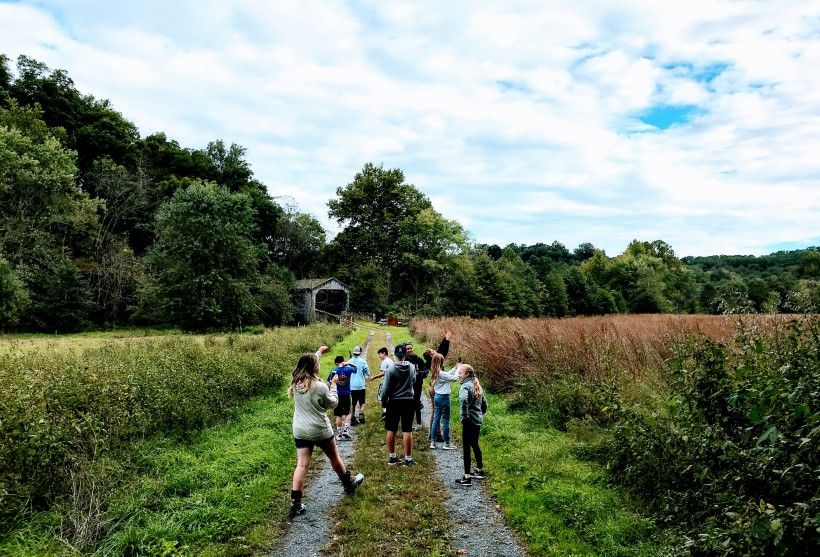
Students also attended a master class at the Museum with artist Kathleen Vance, who shared with them the fascinating artistic and technical process behind her series of Traveling Landscapes—miniature landscapes created inside of vintage suitcases and trunks. Under Vance’s direction, the students experimented with elements of these artworks by making small versions of the trunks in cigar boxes.
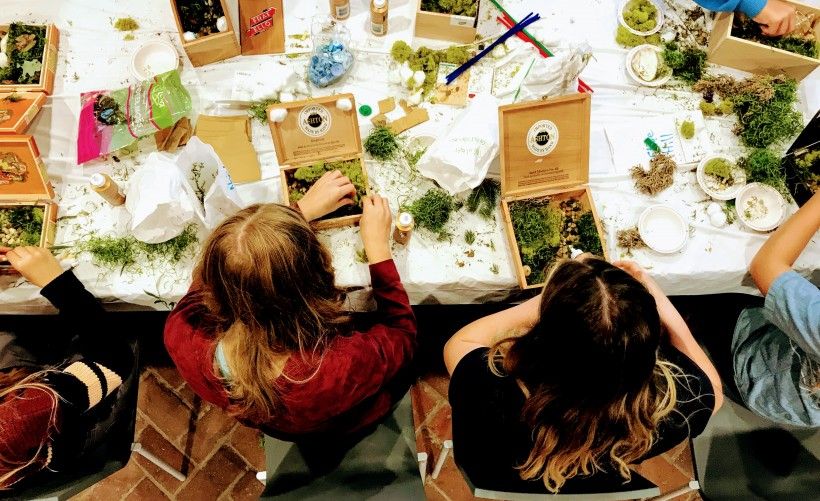
The culmination of these multidisciplinary investigations resulted in the creation of full-scale traveling landscape trunks created by groups of students, using the tools and material resources of Upland’s Idea Center. The trunks, complete with landscape features and running water, were unveiled during a reception held at Upland Country Day School for the students and their families, Brandywine staff and Kathleen Vance.
"The collaboration between Upland Country Day School and the Brandywine was incredibly fulfilling for both the students and teachers alike,” commented Upland’s Liam Gallagher. “It provided a great framework for the students to experience the interconnections between subject matters that they often experience in separate classrooms. Science, art, engineering and English were all wrapped into one project which makes the experience more relevant and meaningful for our students. The collaboration provided a truer representation of how learning and community building can be powerful influencers throughout our lives."
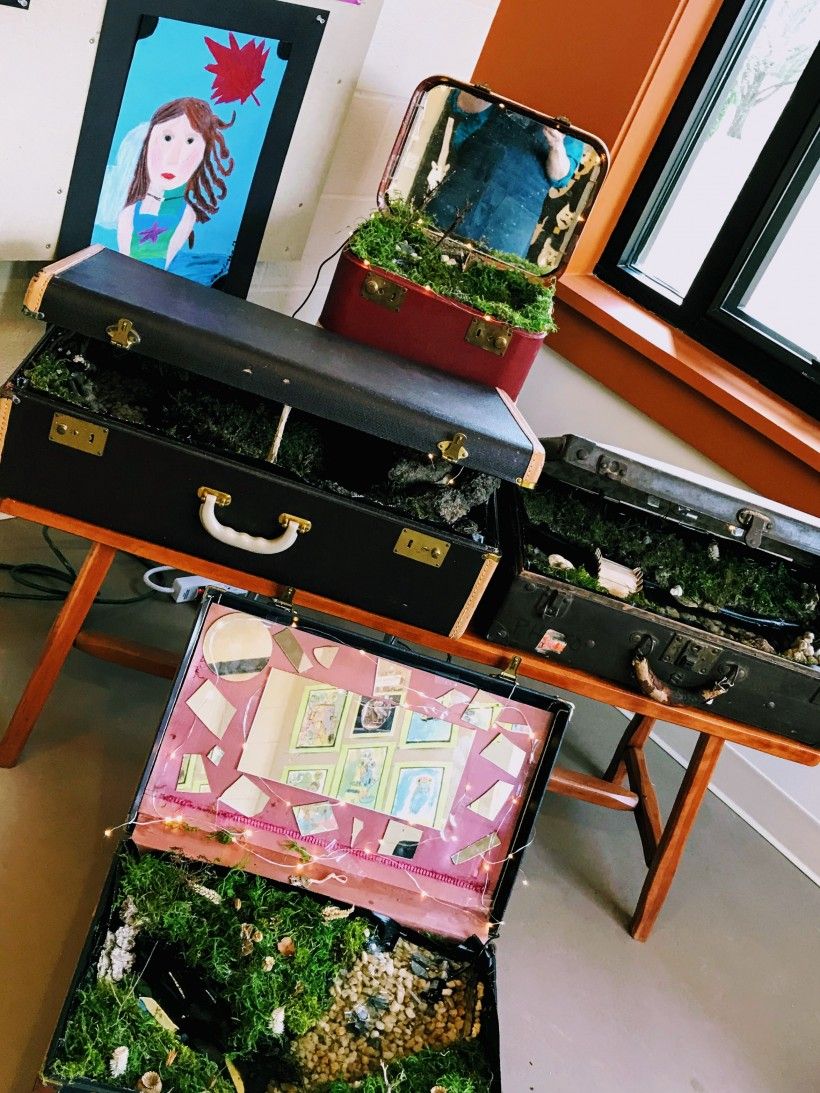

PECO Gives Back

The Brandywine Conservancy & Museum of Art is fortunate to have a community partner in PECO. For more than a decade, the Brandywine and PECO have partnered on education programs, reforestation projects, museum exhibitions and meadow restoration—just to name a few.
PECO invests in organizations that support education, the environment, arts and culture, and neighborhood development programs. That investment goes well beyond corporate contributions. Each April, PECO staff members spend a day at the Brandywine working on a project such as trail maintenance or tree plantings. PECO is currently working with the Conservancy to provide in-kind support of a wetland and meadow restoration project along the Brandywine River Museum of Art’s River Trail, which is located on some of the most scenic areas along the banks of the Brandywine. Brandywine visitors, the community and local wildlife will all greatly benefit from this wetland and habitat restoration project. We are grateful for PECO’s ongoing support—they truly define what it means to be a corporate citizen.
Invasive Species Spotlight: Lesser Celandine (Ficaria verna)

The blooming of ephemeral flowers is one of the early signs that spring has finally sprung, and warmer weather is—hopefully—here to stay. However, not all spring ephemerals are a welcome start to the season. Don’t let the sweet buttercup appearance of lesser celandine fool you. This early, sprouting invasive species grows vigorously, quickly forming large mats and outcompeting native ephemerals before they even have a chance. Lesser celandine can wreak much havoc in its short lifecycle which makes early detection and control key to protecting our native nectar sources of spring.
Chadds Ford Open Space Update 2018
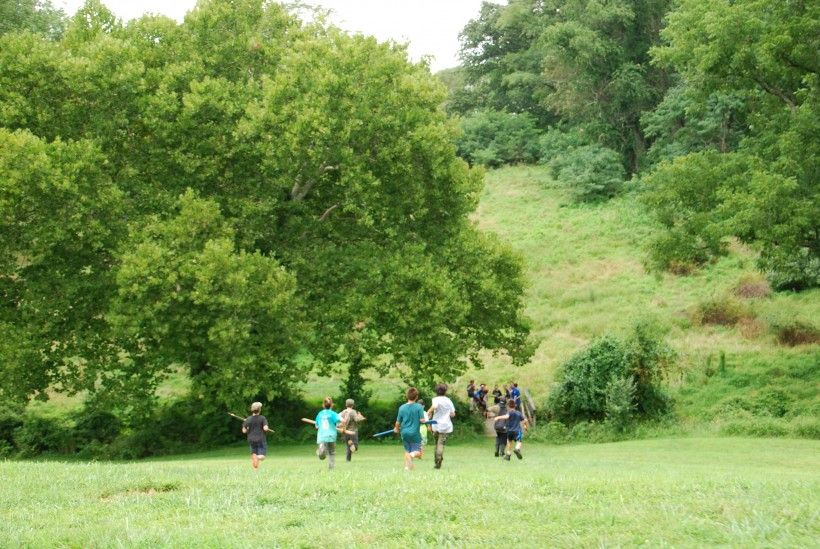
In February 2019, the Chadds Ford Township Board of Supervisors formally adopted Open Space Update 2018. The Brandywine Conservancy was the primary planning consultant for this 18-month project, in partnership with sub-consultant Thomas Comitta Associates.
Unlike the Open Space Plan of 2007—which provides a 20-year blueprint for the protection, management and use of Chadds Ford’s most important natural and cultural resources—Update 2018 provided a 10-year plan that focuses on current and future recreational needs/desires of residents, property owners and other stakeholders in Chadds Ford.
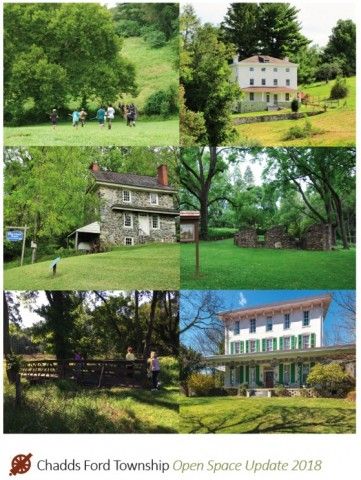
Chadds Ford Township is situated near the heart of the Brandywine Valley and a region that sets a national standard for rich and diverse natural, historic and cultural resources, recreation, and open space preservation. Examples of the many unique regional and local factors that influence parks, recreation and trails planning in the Chadds Ford region include First State National Historical Park, Brandywine Battlefield National Historic Landmark, Brandywine Battlefield Park, Brandywine Valley Scenic Byway, the Brandywine Conservancy & Museum of Art and many other local cultural/historic assets. Chadds Ford serves as a cultural hub within the Brandywine Creek Greenway and is a destination within the regional trail network of the greater Philadelphia region, known as The Circuit Trails.
Key recommendations in Update 2018 include measures to advance land preservation; a conceptual bicycle/pedestrian circulation plan that builds upon the Walkable Chadds Ford initiative; and recreational enhancements on municipal lands at Ring Road and Heyburn Road. The final chapter of Update 2018 includes a matrix of short-, medium- and long-term initiatives that can be implemented by Chadds Ford and/or other key partners over time.
For more information, visit the Chadds Ford Township website at www.chaddsfordpa.gov.
Featured Link: River Alive! at Independence Seaport Museum
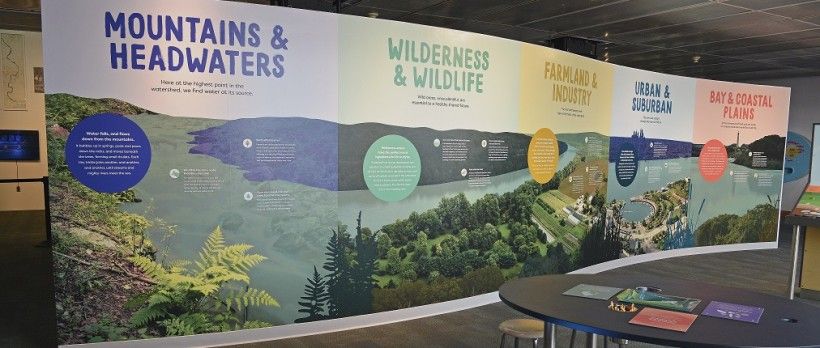
The Independence Seaport Museum’s brand new permanent exhibition, River Alive!, brings the Delaware River to life with hands-on, interactive displays and fun learning experiences. Supported by The William Penn Foundation, River Alive! is designed to help visitors discover the wonders and challenges of our regional waterways. Click here to more about the exhibition!
New Faces of the Conservancy
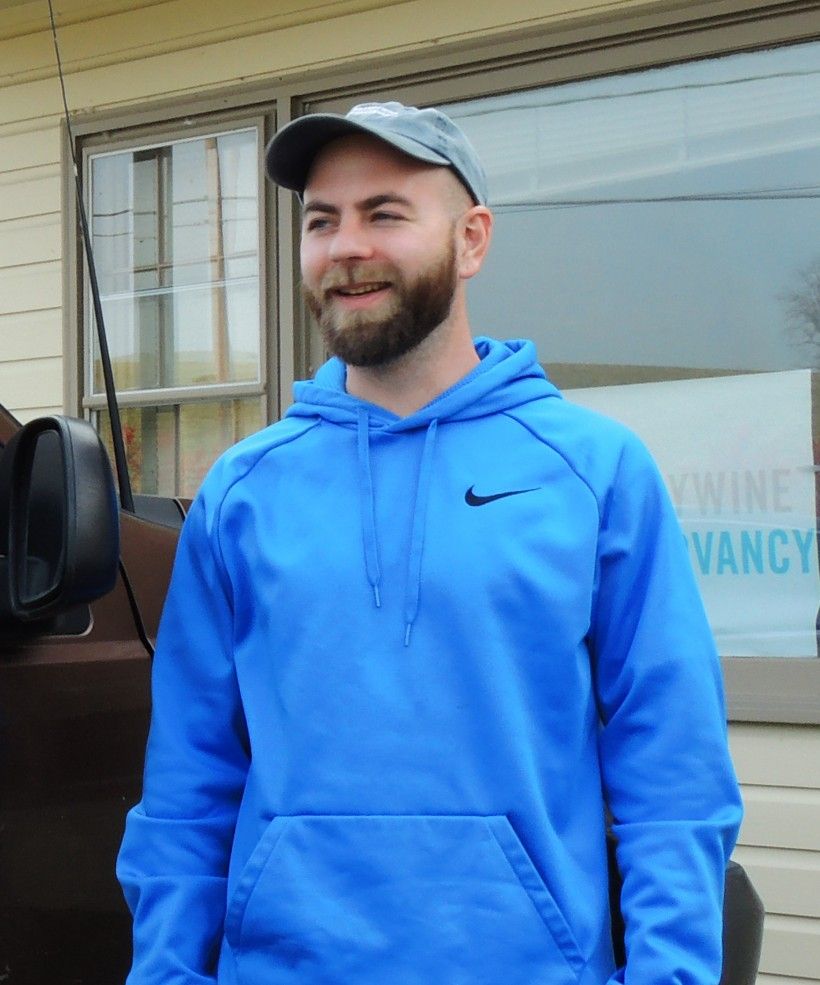
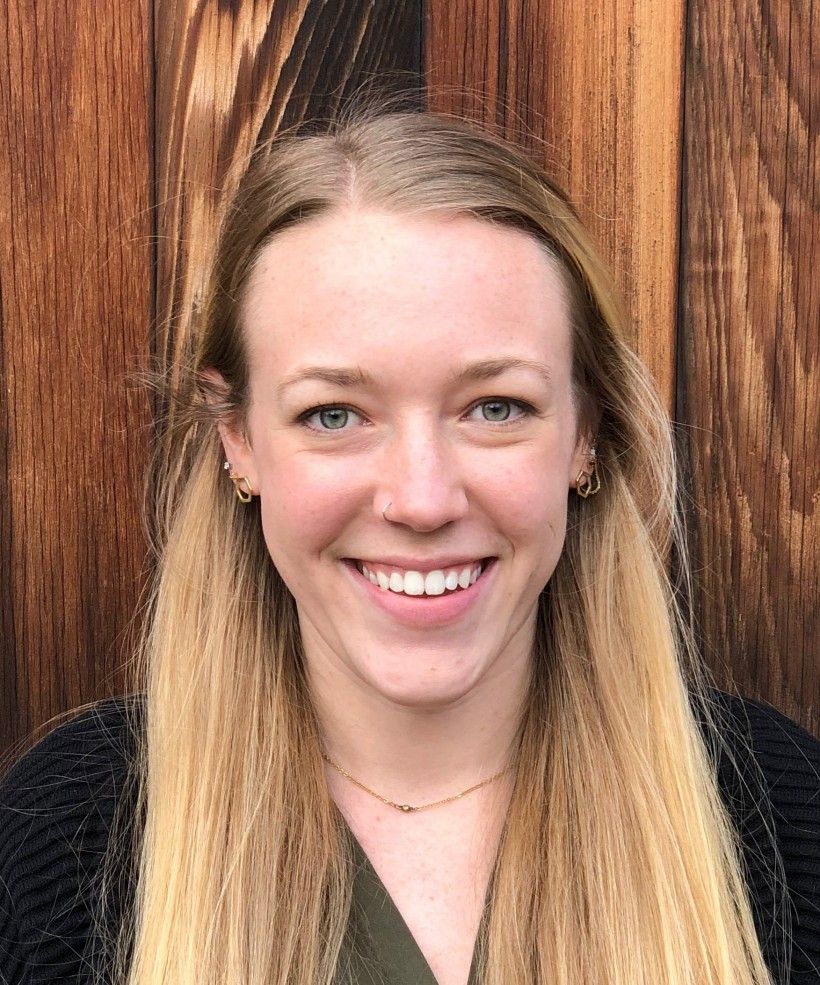
Caleb Meredith joined the Brandywine Conservancy as a new Preserve Steward. Caleb will be spending most of his time doing property stewardship in the Laurels Preserve and on the Miller Farm. Caleb graduated from Indiana University and has been working for several years in the preservation and protection of natural landscapes.
Sarah Sharp is a new Assistant Planner in the Conservancy's Municipal Assistance Program. Sarah worked at the Conservancy as a planning intern for three months prior to accepting a full-time position. She is currently finishing up course work at West Chester University for a dual Master of Science in Geography/Urban and Regional Planning. Sarah is a Chadds Ford resident and brings useful local insight to our team.
Well-attended Holiday Subscriber Program Wraps-Up an Eventful 2018!

Each year the Conservancy’s Subscribers Program holds an annual holiday meeting for its members. Held at the Brandywine River Museum of Art, the most recent program was a very special evening attended by over 50 program supporters, their guests and Conservancy staff. Complete with sumptuous holiday treats and beverages, the evening featured “light” topical presentations in the Museum’s lecture room, after which attendees were invited to head upstairs to tour the festively decorated Museum galleries and holiday train display.
Kicking off the night, John Theilacker, Associate Director for the Conservancy’s Municipal Assistance Program (MAP), welcomed attendees and provided a brief summary of MAP staff’s 2018 work and accomplishments. David Shields, Associate Director for the Conservancy’s Land Conservation Program, followed with a presentation of the Conservancy’s most recent acquisition of Birmingham Hill, a remaining parcel comprising the complete O’Dell property in Birmingham Township. He also explained the significance of this acquisition to the Conservancy’s Brandywine Battlefield (Meetinghouse Corridor) preservation efforts over the past 25 years.
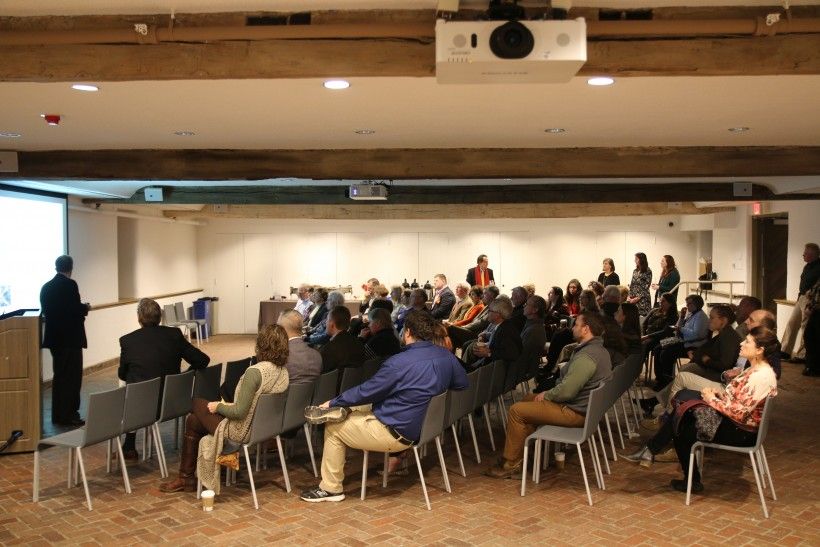
Mr. Theilacker also acknowledged a few of the major personnel changes in this region’s planning and conservation communities in 2018, including: the retirement of Natural Land’s Molly Morrison and promotion of Oliver Bass as the new Executive Director; Bill Gladden’s move from Chester County Open Space Program Director to the Director of French and Pickering Creeks Conservation Trust; Gwen Lacy stepping down as Executive Director of the Land Conservancy of Southern Chester County; David Ward retiring as Assistant Director of the Chester County Planning Commission; and Fronefield "Frone" Crawford retiring from full-time legal practice at Unruh, Turner, Burke and Frees. Both David Ward and Frone Crawford were in attendance and officially recognized by the Brandywine Conservancy for their significant contributions to sound planning and conservation in Chester County, and for their expertise generously shared with the Conservancy and its Municipal Assistance Program over the years. In recognition of their service, both received well-wishes from the Conservancy and a Brandywine Critter “River Rat” ornament dressed in holiday cocktail party attire.
Municipalities, conservation organizations, planners, attorneys, developers or others in our region that would like to learn more about the Conservancy’s Municipal Subscribers Program should contact Elissa Manuele at [email protected].
Save the Date!
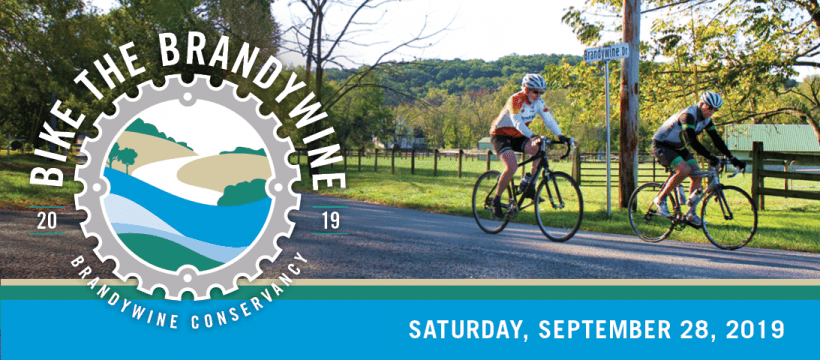
Bike the Brandywine will be held on Saturday, September 28, 2019. Riders can choose from distances of 25, 45, 62 (Metric Century) and 80 mile routes through the majestic Brandywine Creek Greenway and surrounding area. The ride begins and ends along the banks of the Brandywine River and participation supports the open space and clean water initiatives of the Brandywine Conservancy. Registration is now open!
In Memoriam
David E. Davis III
February 17, 1948 – December 27, 2018
The Brandywine was saddened to learn of the death of David E. Davis III. “Dave” Davis was an avid supporter of historic preservation and conserving open space. He served on the Brandywine Conservancy & Museum of Art’s board of trustees from 1995–2001 and chaired its Environmental Committee for seven years. Mr. Davis was extremely active in the planning and conservation communities of Chester County and was a member of the Chester County Planning Commission during its development and adoption of Landscapes, the award-winning Chester County Comprehensive Plan.
While chair of the Environmental Committee, Mr. Davis understood the value of conservation actions through municipal partnerships, and brought on Jack Hines, then-Manager of West Bradford Township, as a member of the Environmental Committee. “Dave Davis was passionate about preserving our history, the importance of the Broad Run creek as an exceptional waterway in West Bradford Township, and the preservation of open space,” commented Jack Hines, current chair of the Environmental Committee and Trustee of the Brandywine. “Dave liked very much to be in the background encouraging collaboration and projects that are important to our community. His help and work will be missed.”
As Chairman of the Board of The American Gift Fund, Mr. Davis granted $80,000 in funds to the Brandywine Conservancy in mid-2018 to focus on land conservation and water quality improvements within the Broad Run watershed of West Bradford Township. We are grateful for his support and will miss his voice in the community.
Phyllis Mills Wyeth
November 13, 1940 – January 14, 2019
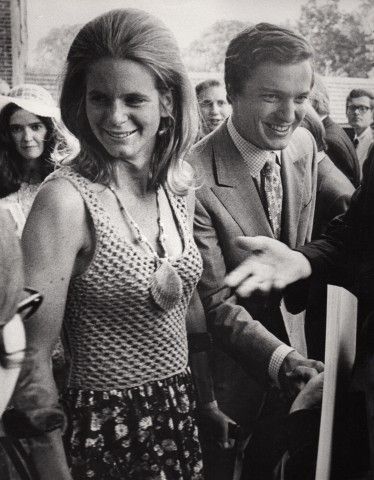
The Brandywine lost a dear friend with the death of Phyllis Mills Wyeth, who was a major supporter of the Brandywine Conservancy & Museum of Art and a founding member of its Board. In addition to her work with the Brandywine Wyeth was a noted philanthropist, conservationist, environmentalist, arts supporter, accomplished horsewoman and a staunch advocate for the rights of the disabled.
Phyllis Mills Wyeth grew up on a farm outside of Middleburg, Virginia, adjacent to Hickory Tree Farm—a renowned Thoroughbred breeding, training and racing facility founded by her parents, James and Alice du Pont Mills. Growing up with a passion for horses and steeplechase events, Wyeth competed in several local point-to-point races as a teenager. During her early college years, she majored in political science and worked for then-U.S. Senator John F. Kennedy and, later in the White House, as a secretary to Kennedy’s special assistant. Though a life-altering auto accident left her disabled at age 20, Wyeth’s spirit remained ebullient. In 1968, she married artist Jamie Wyeth. Together they were one of the first to grant a conservation easement to the Brandywine Conservancy in 1969, preserving 44.5 acres of their land along the west bank of the Brandywine River, permanently protecting it from development.
A well-known figure in the fields of both carriage driving and Thoroughbred horse racing, Wyeth bred the famed horse Union Rags—a fourth-generation descendant of her family's breeding program. Union Rags would later become Wyeth’s “dream come true” champion horse and winner of the Belmont Stakes in 2012.
Wyeth had an extraordinary career in public service, advocating for both the arts and for the rights of the disabled. She worked as a teacher for the Terry Children's Psychiatric Center in Wilmington, Delaware, and she spent many years in Washington, D.C., working as a consultant for the National Endowment for the Arts and as vice chairperson of the National Committee on Arts for the Handicapped. She also served on the President’s Committee on the Employment of the Handicapped. Her environmental activities included the creation of the Herring Gut Learning Center in Port Clyde, Maine, which fosters hands-on study and experience in aquaculture and marine science. Wyeth was later awarded the NOAA Fisheries Environmental Hero award in 2002 for her efforts with the organization.
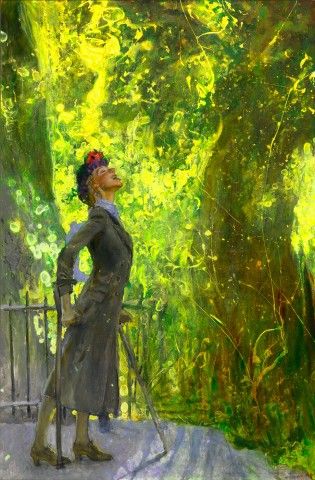
Jamie Wyeth, Catching Pollen, 2012, Enamel, oil, and gesso on canvas, 60 x 40 in., The Phyllis and Jamie Wyeth Collection
As a tribute to Wyeth, the Brandywine organized Phyllis Mills Wyeth: A Celebration, on view through May 5, 2019, featuring a selection of portraits created by her husband, Jamie. From the late 1960s onward, Wyeth served as a muse to her spouse. The paintings assembled in this exhibition is a memorial tribute and reflects Phyllis Wyeth’s vibrant spirit and love of nature, horses, and her ever-present dogs. A catalogue published by the Brandywine accompanies the exhibition. Following its presentation at the Brandywine, Phyllis Mills Wyeth: A Celebration will travel to the Farnsworth Art Museum (Rockland, Maine) from June 7–September 8, 2019, and the Greenville County Museum of Art (Greenville, South Carolina) from October 7–December 29, 2019.
The Brandywine is honored to have been selected by the Wyeth family as one of the organizations to receive contributions in Phyllis Wyeth’s memory. For more information, visit brandywine.org or contact Suzanne Regnier at 610.388.8308.